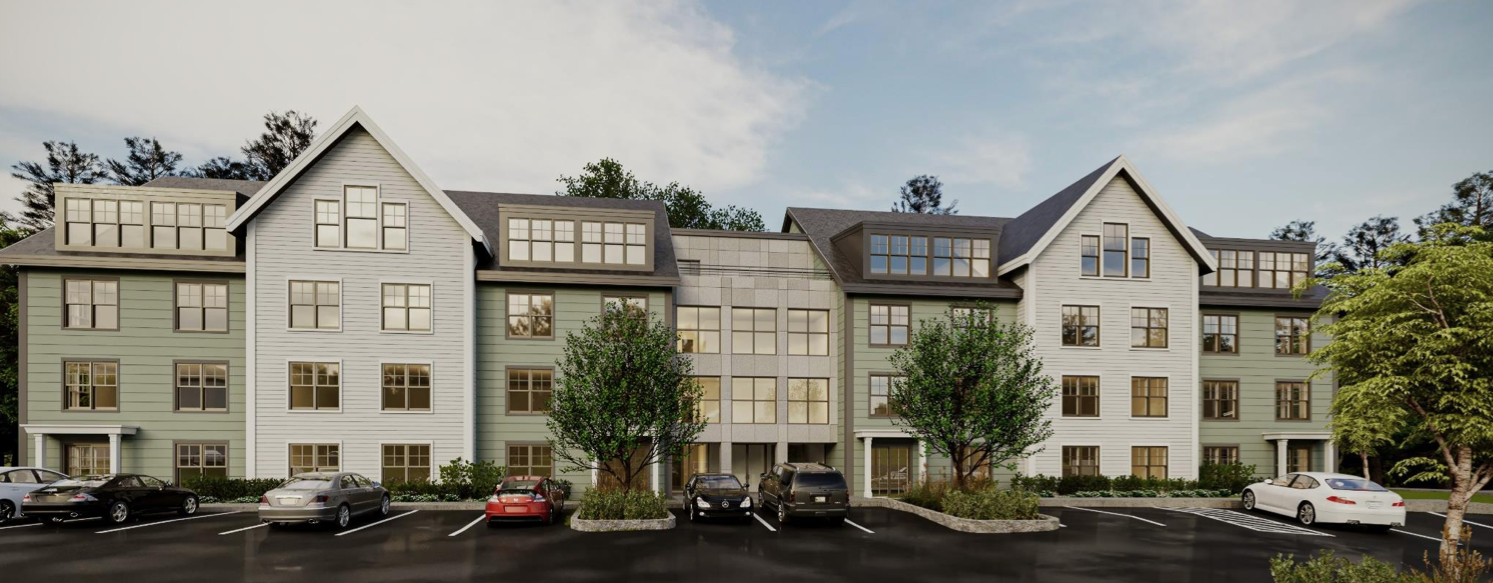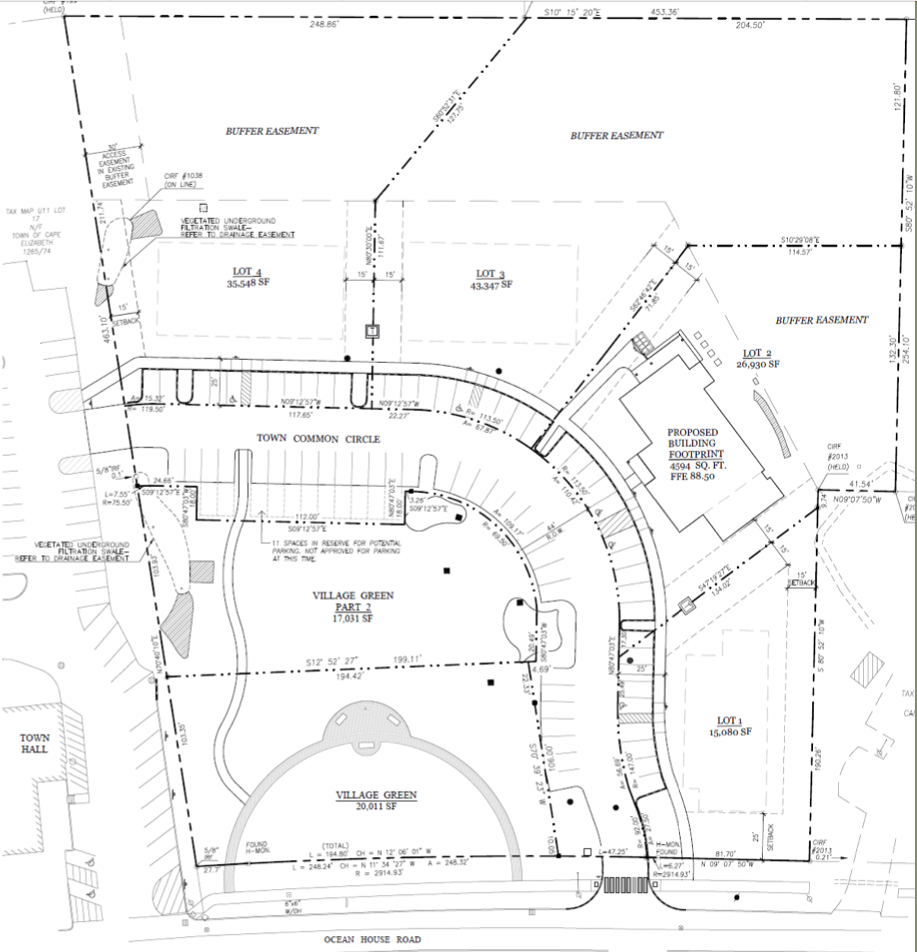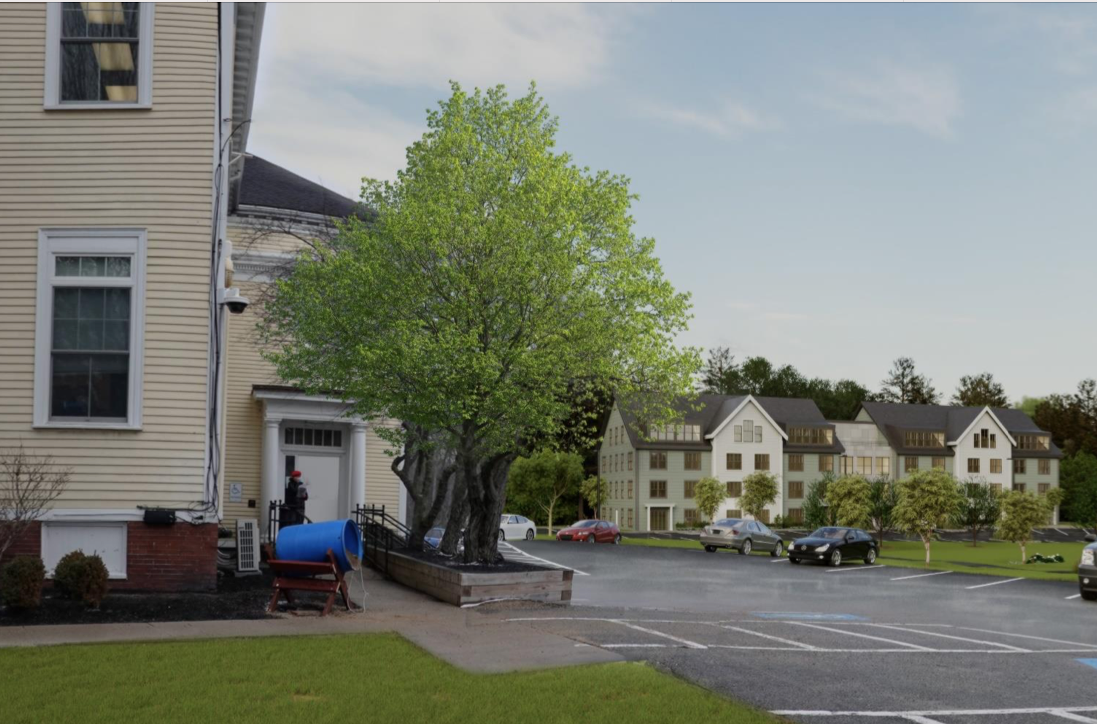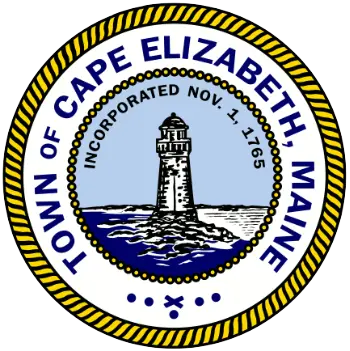Published on February 04, 2021

At the Monday, February 1, 2021 Town Council Workshop the council received a presentation by Nathan Szanton and Kristin Martin of The Szanton Company relating to a proposed multi-family development at the Ocean House Commons located adjacent to the new Village Green on Ocean House Road. The Szanton Company is an affiliate of Monks Companies owned by Cape Elizabeth resident, Robert Monk, who was also in attendance. The Szanton Company specializes in developing mixed-income rental housing and property management prioritizing residents. Since 2004, The Szanton Company has developed 11 apartment complexes, with ten located in Maine. The most recent property development, the Furman Block, is located in Portland on Kennebec and Parris Streets.
In Cape Elizabeth, Szanton is looking to provide housing which supports goals within the 2019 Comprehensive Plan which move to increase both diversity of housing types and affordable housing. The proposed project would be located on lots three and four off of the Village Green and would provide 49 one-bedroom apartments targeting a variety of income levels. Through their work with MaineHousing’s affordable housing program, 80 percent of the units would be offered as affordable and 20 percent of the units would be offered at market rate. Szanton explained that in order for this formula to work, 39 units would be available to rent to anyone whose annual income does not exceed $42,000 or up to 60 percent of the area median income. The estimated monthly rent for these units would be approximately $1,040. The ten market-rate units would rent for approximately $1,495 per month. Rent would include hot water, wi-fi, fitness center, community room, resident service coordination, and parking.
The project faces several hurdles related to zoning for which the developers are seeking amendments. These include density, height, building footprint, and commercial space requirements. The two lots designated for the development would allow for only 26 units under the current zoning regulations, but in order for the project to be financially feasible there needs to be 49 units. Martin explained that the lots include 100 feet of a wooded buffer which are protected from development. This, along with the Village Green, would preserve open space despite the density of units.
The current zoning height limit is 35 feet. With four floors, the Szanton project reaches 42 feet. However, the elevation at the proposed site is six feet lower than the elevation on Ocean House Road. This decrease in elevation would mean that the new building would not surpass the roofline of Town Hall. In order to achieve the critical number of 49 units, the fourth floor is necessary.
Current zoning limits a building footprint to 5000 square feet and allows for two buildings to be joined by a connector. The connector for the Szanton development includes a community room and three units, thereby making it a non-traditional connector. In order to meet the benchmark of 49 units, this provision would also need to be amended.
The fourth obstacle is current zoning which requires that the first floor be reserved for commercial use. In order to create 49 units, the first floor must be used. Martin explained that one of the reason the amendment should be considered is that the property site is furthest from the main road. This location would not easily attract patrons to any future commercial establishment.
The total project cost is estimated to be $12.5 million. Financing for all but seven percent of the project cost has been arranged. This leaves a $750,000 gap which can be bridged through Tax Increment Financing (TIF). As Szanton and Town Manager Matt Sturgis explained, a TIF is a flexible finance tool that a municipality can use to leverage new property taxes created by a specific project or development. In this case, a TIF would permit the Szanton project to close the seven percent gap, as well as offer significant financial benefits to the town. The benefits are seen in the increased land value which is added to the town coffers annually and the entire taxable value being paid to the town after 30 years. Furthermore, it ensures that affordability restrictions are in place for 45 years, creates 39 affordable rental housing units that would not exist otherwise, and adds vitality to the town center.
The majority of Town Councilors and community members who offered comments after the presentation stated that they were encouraged with the project’s purpose and potential for the town. Councilor Penny Jordan commended the presentation and shared that the project was “exactly what was envisioned during the work of the Comprehensive Plan Committee.” Jordan added that the density the development would create “would really bring the energy we need to the town center in order to have vibrant businesses; we will not have vibrant businesses until we have people around and engaging in the town center.” Those concerned with the project primarily cited the absence of units offering two or more bedrooms, which would likely preclude single-parent families from renting.
With hurdles to cross and timing constrained, Sturgis suggested that the council consider referring Town Center Affordable Housing Amendments to the Planning Board during the next Town Council meeting on February 8 at 7:00 p.m. If approved by the council, the Town Council would request that the Planning Board complete and return their review of the recommended amendments by April 30, 2021.
The presentation and video recording of the workshop can be found here.
Ocean House Commons configuration

Virtual renderings (courtesy of The Szanton Company)



